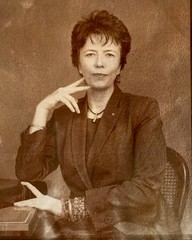The rather enigmatic title of this post is the name of an exhibition and book by photographer Taryn Simon. Simon currently has an exhibition at MOMA in New York and which I visited on my recent trip.
Simon is regarded as the current ‘queen’ of typological studies. She appears to be totally committed to the catalogue. One of her recent projects, Contrband she made 1075 photographs of items confiscated by the U.S. Customs and Border Protection Federal Inspection Site and the U.S. Postal Service International Mail Facility at John F. Kennedy International Airport, New York. All were photographed in an identical manner with plain lighting against a white background. The items photographed were many and various and included amongst other things animal corpses.
The work Living man etc. was produced over a four-year period (2008-11), during which she researched and recorded bloodlines and their related stories. The subjects Simon documents include victims of genocide in Bosnia, test rabbits infected with a lethal disease in Australia, the first woman to hijack an aircraft, and the living dead in India.
Each work in the series has three segments. On the left of each chapter are one or more large portrait panels systematically ordering a number of individuals directly related by blood. The sequence of portraits is structured to include the living ascendants and descendants of a single individual. The portraits are followed by a central text panel in which Simon presents narratives and collects details. On the right are Simon’s ‘footnote images’ representing fragmented pieces of the established narratives and providing photographic evidence.
The empty portraits represent living members of a bloodline who could not be photographed. The reasons for these absences are included in the text panels and include imprisonment, military service, dengue fever and women not granted permission to be photographed for religious and social reasons.
The work is both fascinating and exhausting. For example in the series on rabbits from Australia she photographed a bloodline of rabbits which included 35o separate rabbit portraits.
I found myself looking very carefully at the series of portraits. I was looking for family resemblances and people who stood out. When I found something interesting I immediately went to the second panel to look at the caption to find out who the person was.
All of the portraits are made in identical format. There is little or no difference in the lighting, exposure, colour temperature etc. I assume that she could only do this by fully controlling all of the photographic variables in a studio environment. The portrait subjects are generally seated and are pictured 3/4 length in a half frontal pose. One curious thing is that in all of the portraits the head of the subject is in the centre of the frame leaving the top half of the frame empty ( I have seen this before in work by Bettina Von Zwehl (see here). I wonder if it is some form of convention?). The lighting is consistent and very plain and the background is plain off white.
The third panel of each chapter was much more subjective. I found myself having to search for linkages and had to look hard at the images. This added to the interest and fascination of the whole show.
I could have spent hours at this exhibition. The sheer volume of data which Simon presents is phenomenal and in this series the use of text and additional images really added to the portraits. I was left with a sense that this work is really about survival – a point which is emphasised by the empty portraits which punctuate the series.
I actually spent about 2 hours at the exhibition and learned a lot.
- Simon spent four years on this work. To do great work takes a lot of time!
- Successful typologies are truly exhaustive – Simon was extremely so in compiling the bloodlines
- The absolute consistency in presentation really did force one to view the portraits as a catalogue. I did not have to stop and think why there were subtle differences between them in terms of colour temperature, framing, lighting etc. There were no differences! At one time I had considered my I am an Ironman portraits of my triathlete extended family to be a typology – I can now see that it does not work really work well in this genre. It is not absolutely exhaustive and the images contain differences in lighting, background colour, and poses of the subjects. It is in fact documentary portraiture.
- The use of three panels is an different and interesting way to present the work. It reemphasises the point I had already acknowledged that presentation of one’s work is almost as important as the content and form of the individual photographs. I must give this a lot of attention for my Advanced studies presentation.
- The convention of framing the portraits is interesting. I must look further into this. It may be related to conventions in painting or other media.
- The whole idea of recording what was not there as well as what was is very interesting.
The photographs from the series can be viewed on Simon’s website.
On a final humorous note, I bought the exhibition book. Not a good idea when it came to packing my luggage to come home. It weighs 5 kilograms!!


September 27th, 2012 → 9:01 am
[…] fill) has lead to slightly inconsistent results. Certainly having seen Taryn Simon’s work (here) this is definitely the case. He accepted however that this criticism is very pedantic. The only […]
January 7th, 2013 → 11:22 am
[…] such I had in mind the fact that significant typologies by the likes of Sander and Taryn Simon (see here) are so much more exhaustive. I will revisit this section of my text for inclusion in my reflective […]